Leaving Tesla? The Volvo EX30 might just be your ticket
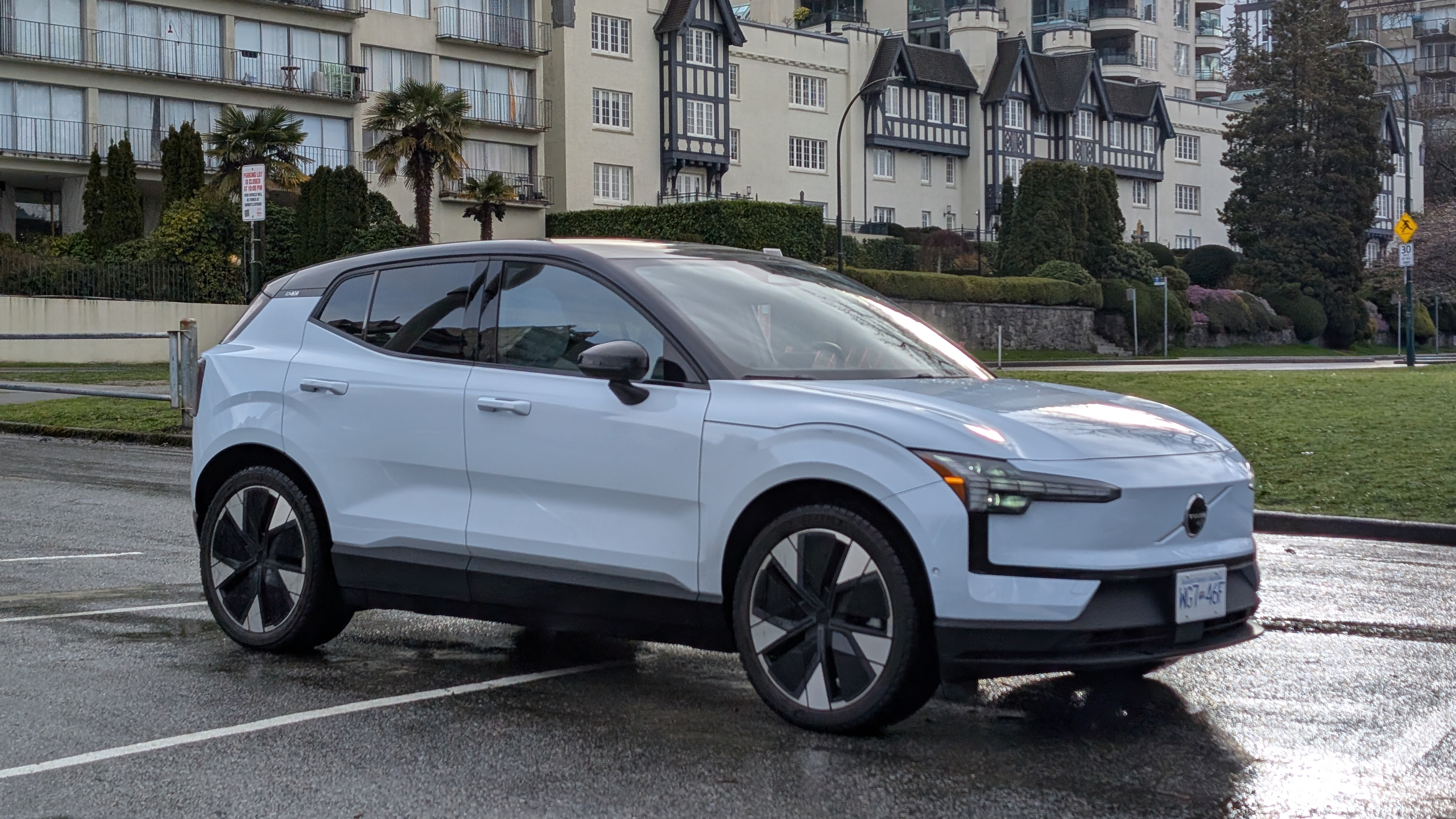
Last year, I wrote about the five must-have features to future-proof your first or next EV purchase, and finally, there’s an EV starting to roll out in the US that comes close to meeting the majority of my requirements. It’s not made by Tesla, Rivian, or Lucid, and – best of all – it’s reasonably affordable and doesn’t skimp on performance or driving dynamics, two additional selling points that really matter to me.
To recap, here are the five things I’m looking for:
- A real-world range of more than 275 miles
- Supercharger access and charging rates above 200kW
- A software defined vehicle
- Level 2+ ADAS
- Direct-to-consumer sales
Behold, the Volvo EX30, a compact all-electric SUV which starts at $46,195, delivers up to 253 miles of range, and sprints to 60mph in just 3.4 seconds. If this Volvo sounds familiar, it’s because we’ve covered it on TechRadar already, but from a European and Australian perspective. Eagle-eyed readers will have noticed that I picked the EX30 not once, but twice, as one of my most anticipated upcoming EVs, both for 2024 and for 2025.
A slow roll(out)
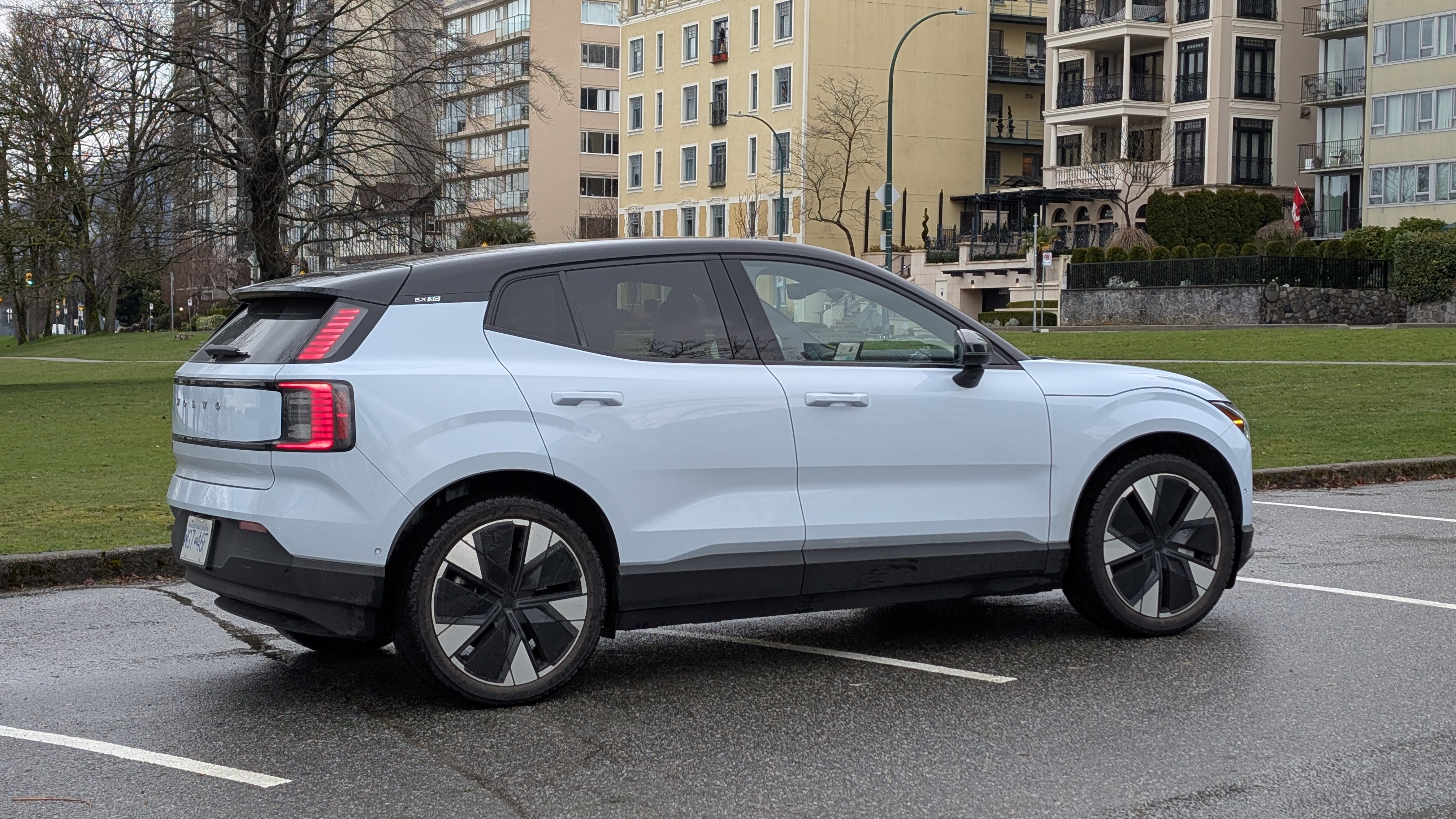
So why did it take so long for the EX30 to make it to our shores? After all, the car was launched in Europe back in December 2023. The delay was caused by tariffs imposed by the US government on vehicles made in China. See, Volvo is owned by Geely, the Chinese auto manufacturer that’s also parent to Zeekr, Polestar, and Lotus, which, alongside BYD and Neo, makes some of the most compelling EVs in the world today.
Because the EX30 was being manufactured in China, Volvo had to delay the launch in North America by over a year and move some of the EX30's production to Belgium. Even after the EX30 started appearing in US showrooms earlier this year, it was difficult to come by, both for customers and for the media. Thankfully, Volvo Canada let me borrow a press car in Vancouver, BC, for a week, so I can share my experience with the EX30.
After all, here in North America, we have different tastes, roads, expectations, and travel distances to deal with than our European and Australian counterparts. I drove the EX30 around town and to Seattle and back, about 300 miles round trip.
Exterior and interior
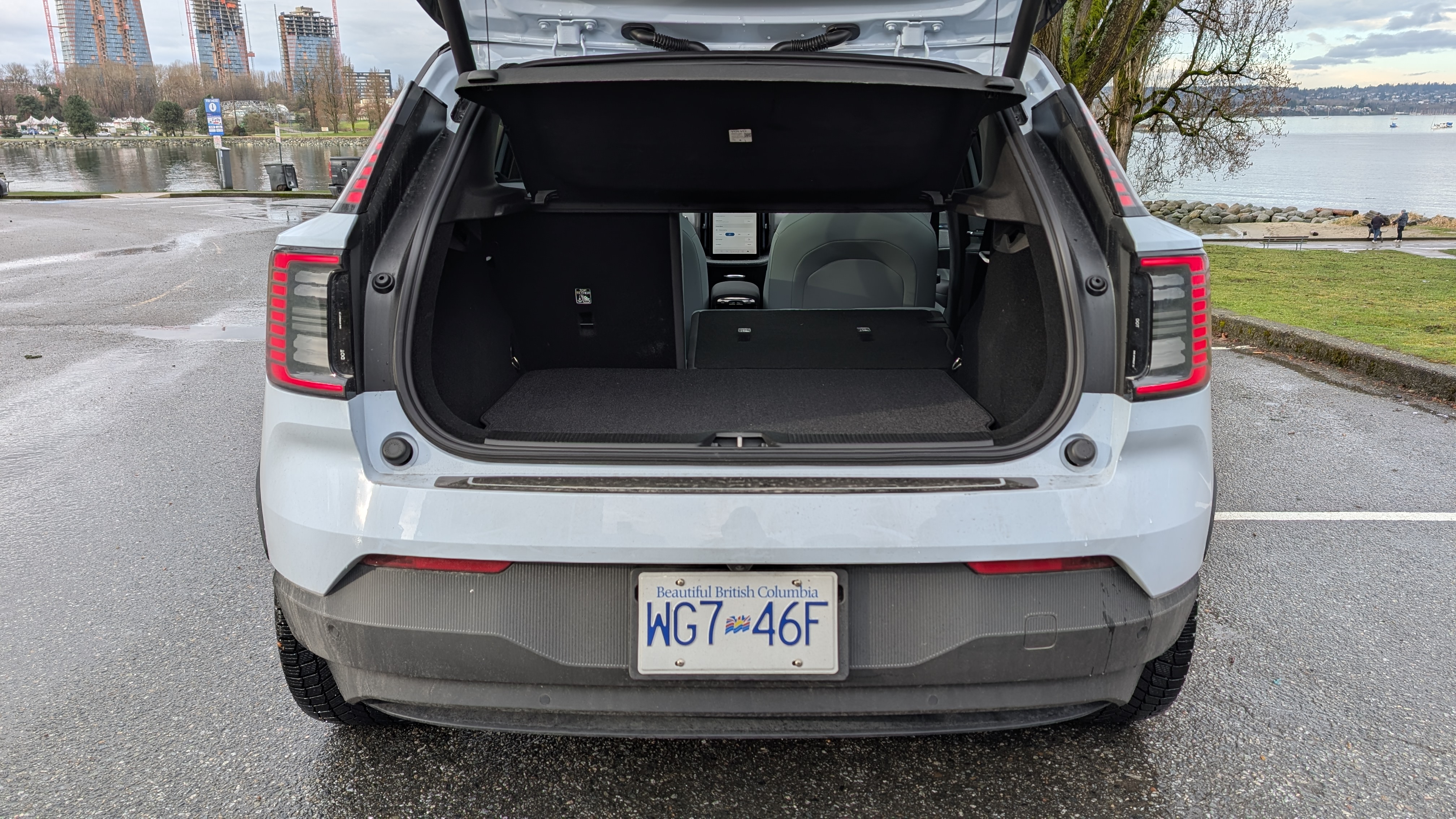
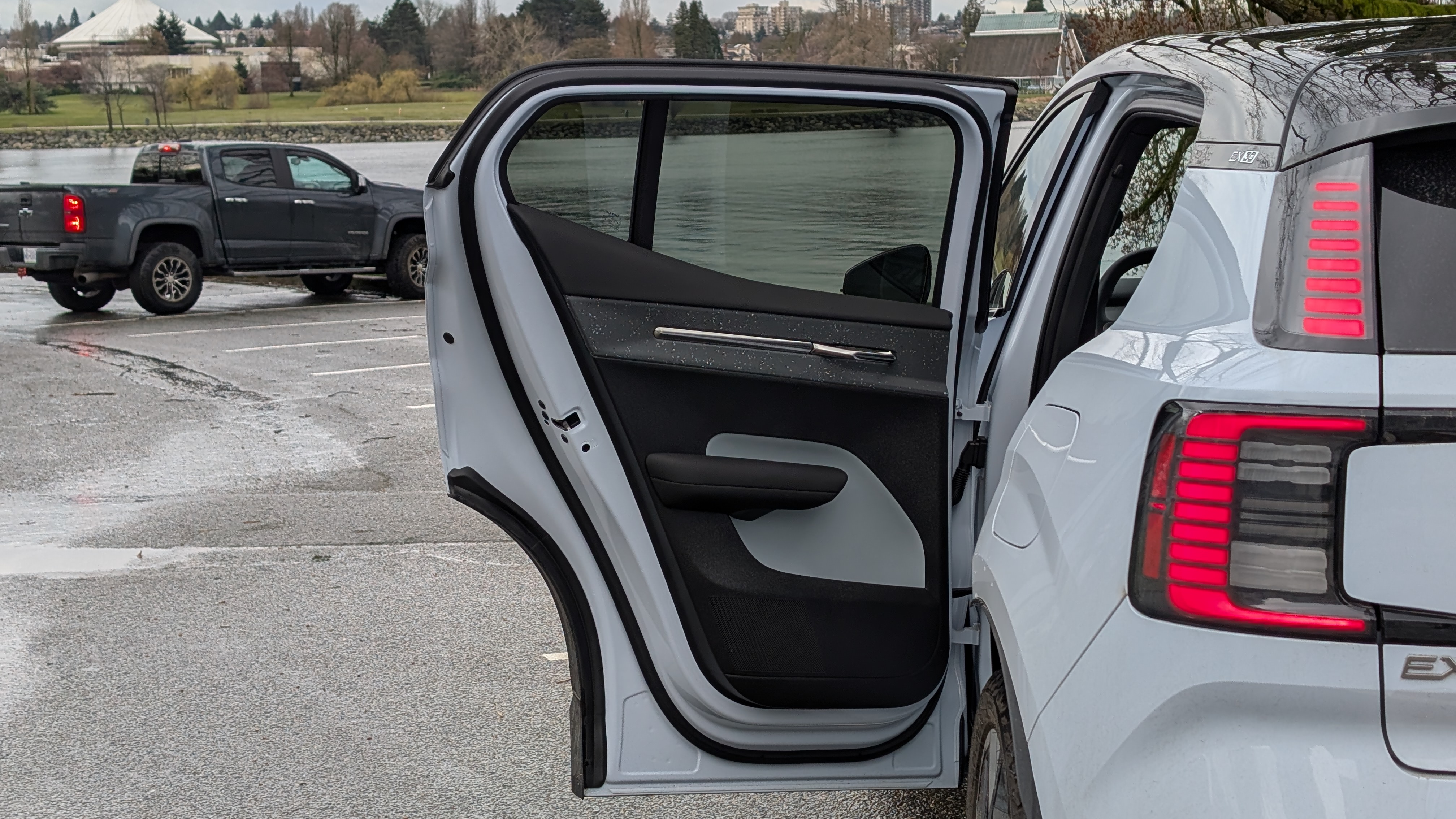
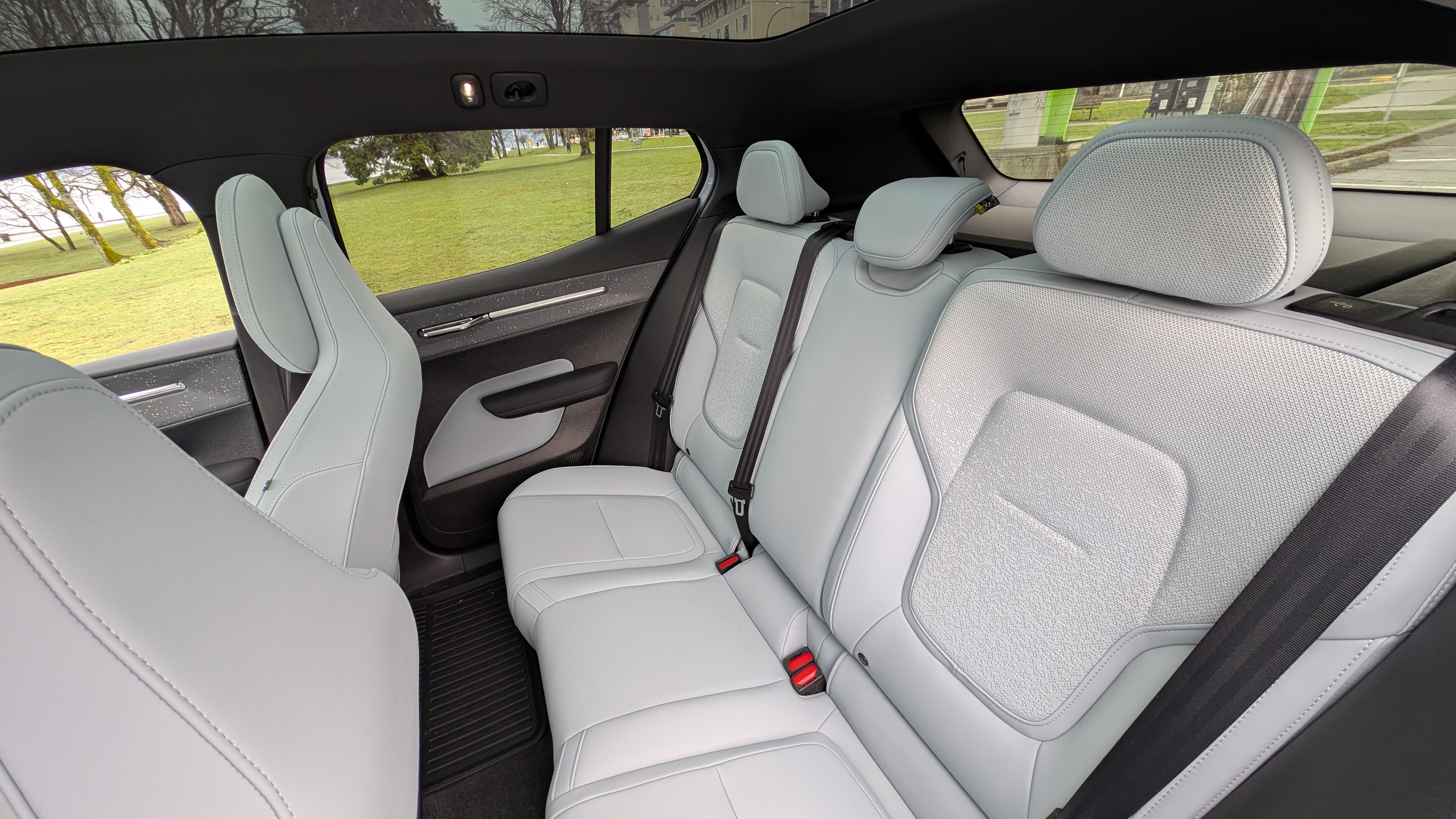
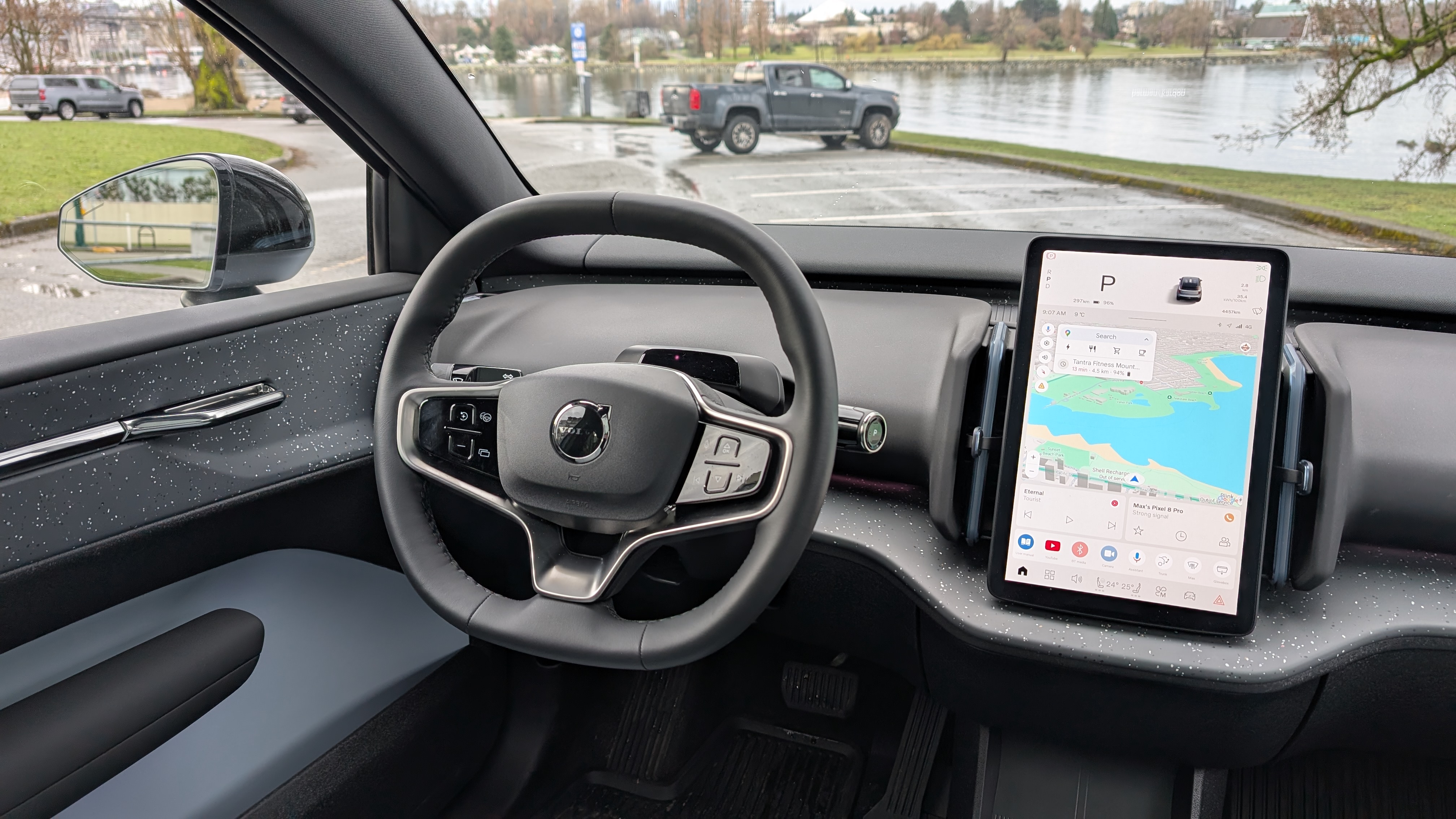
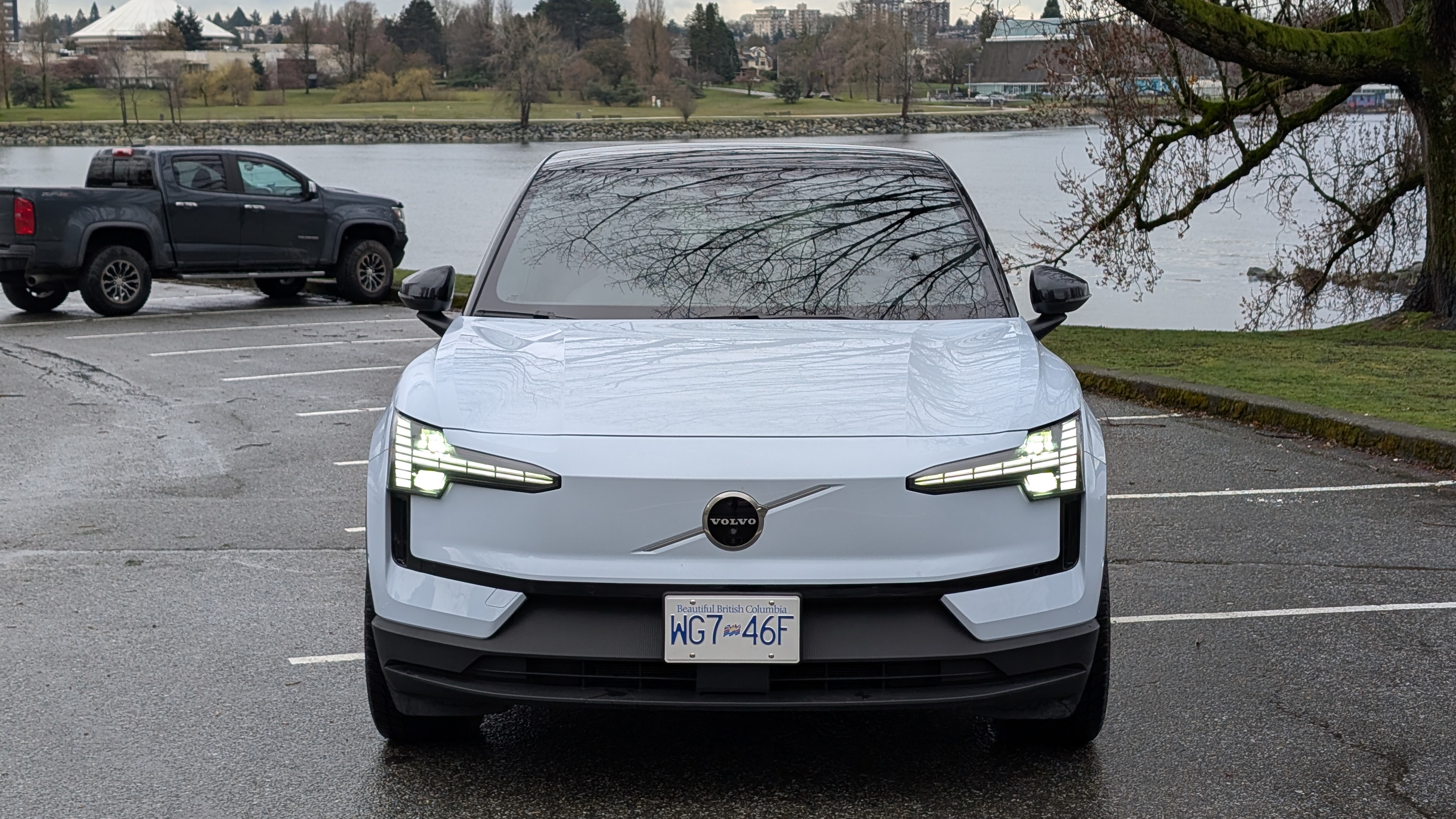

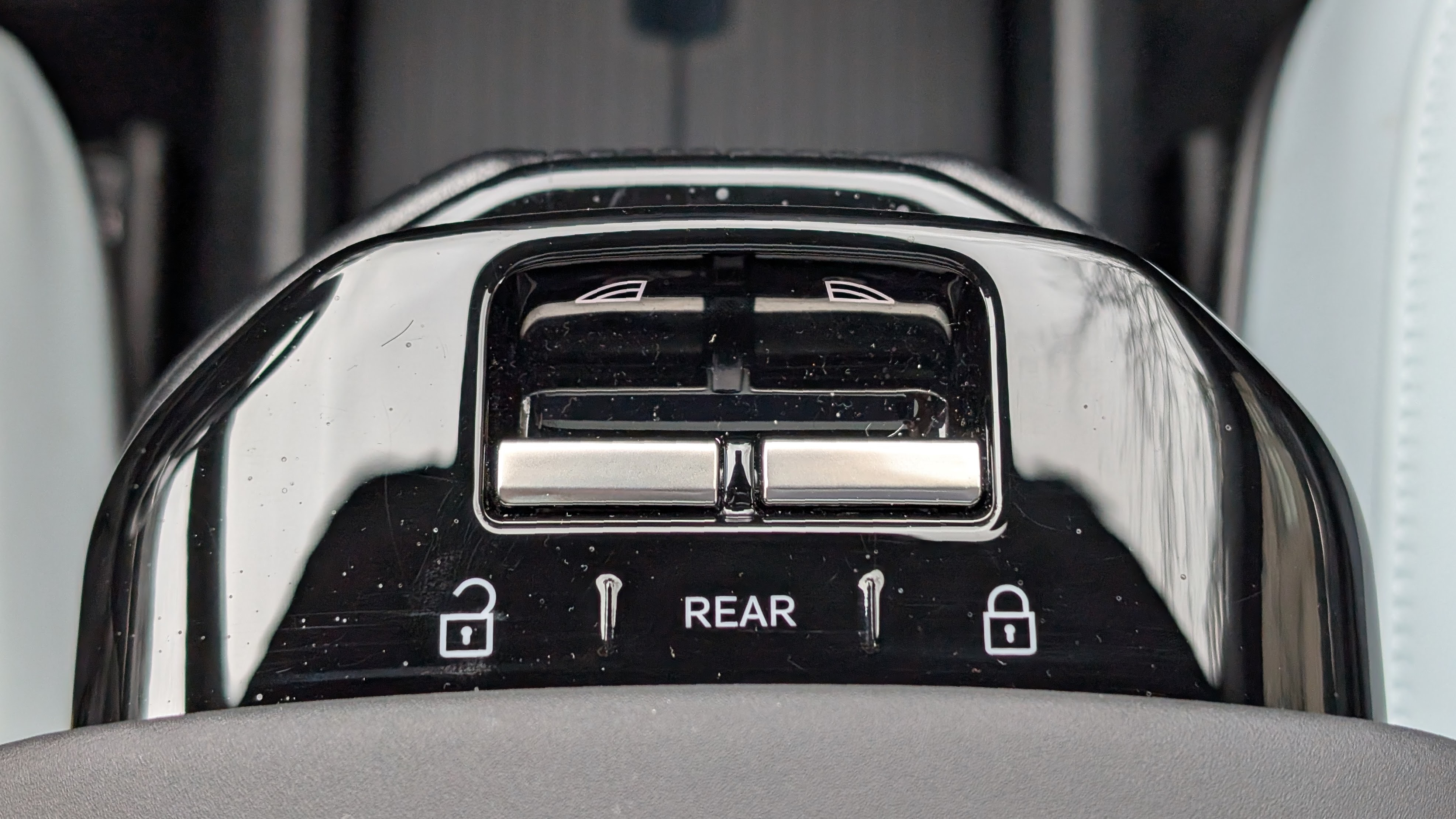
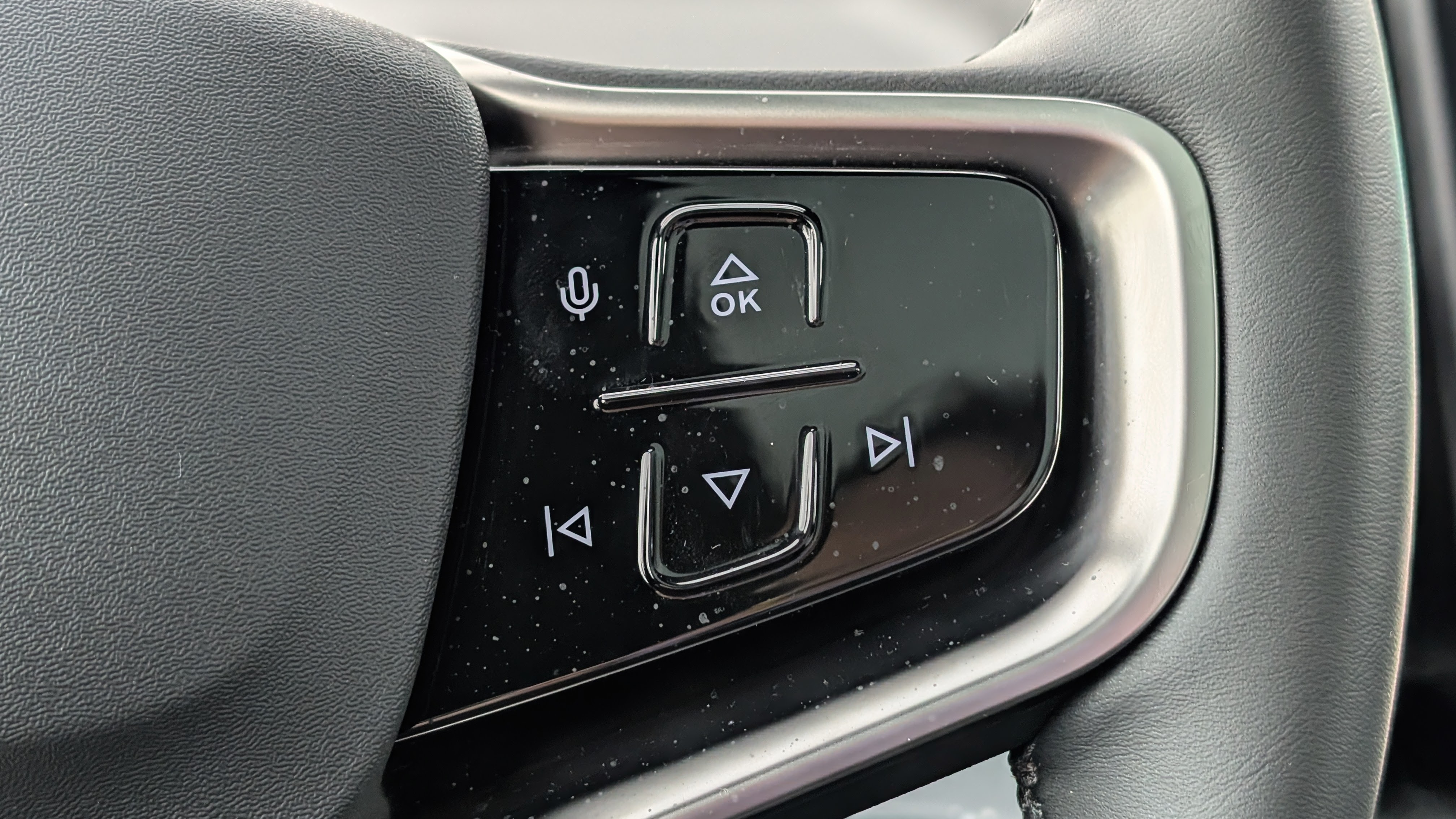
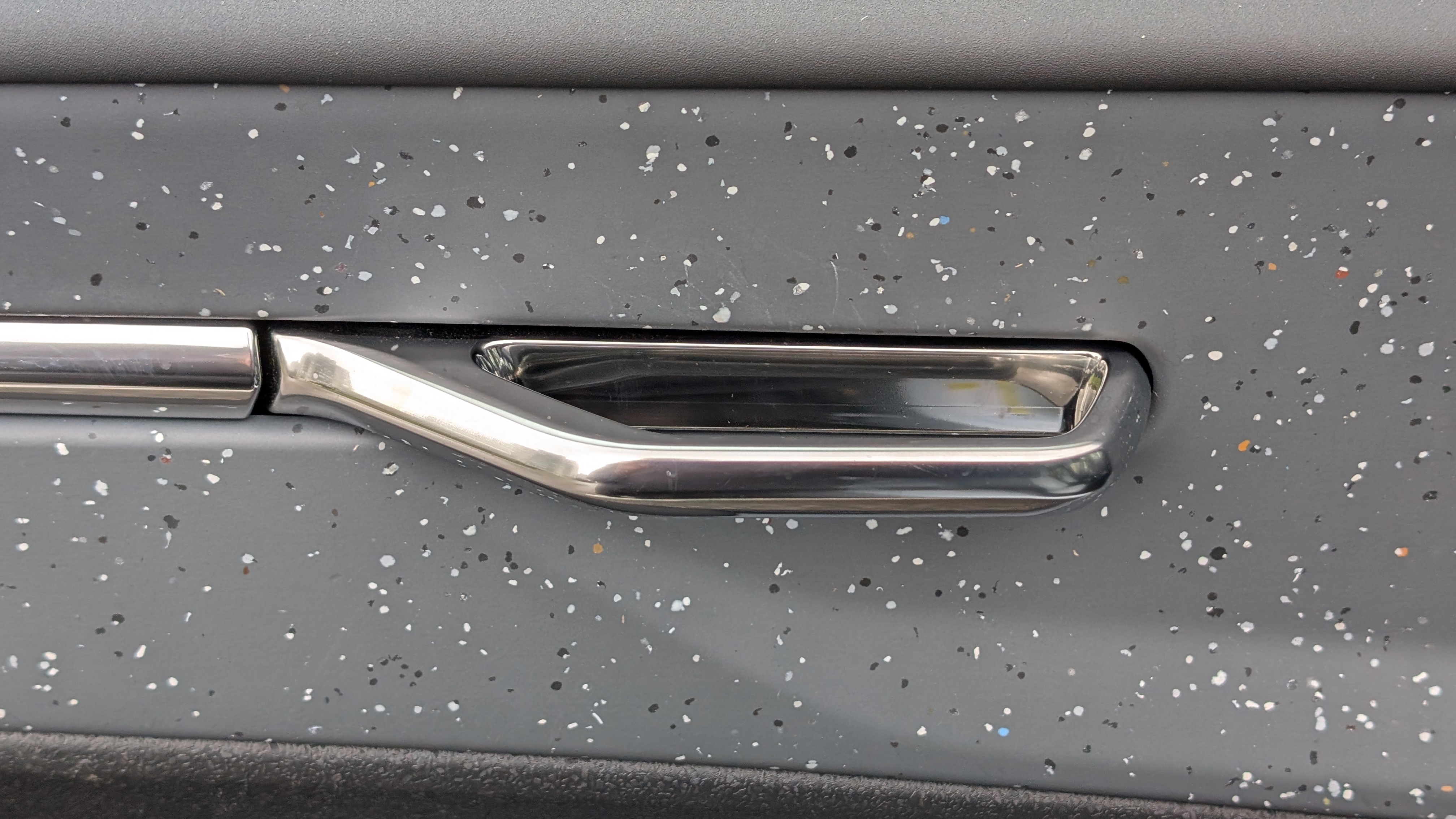
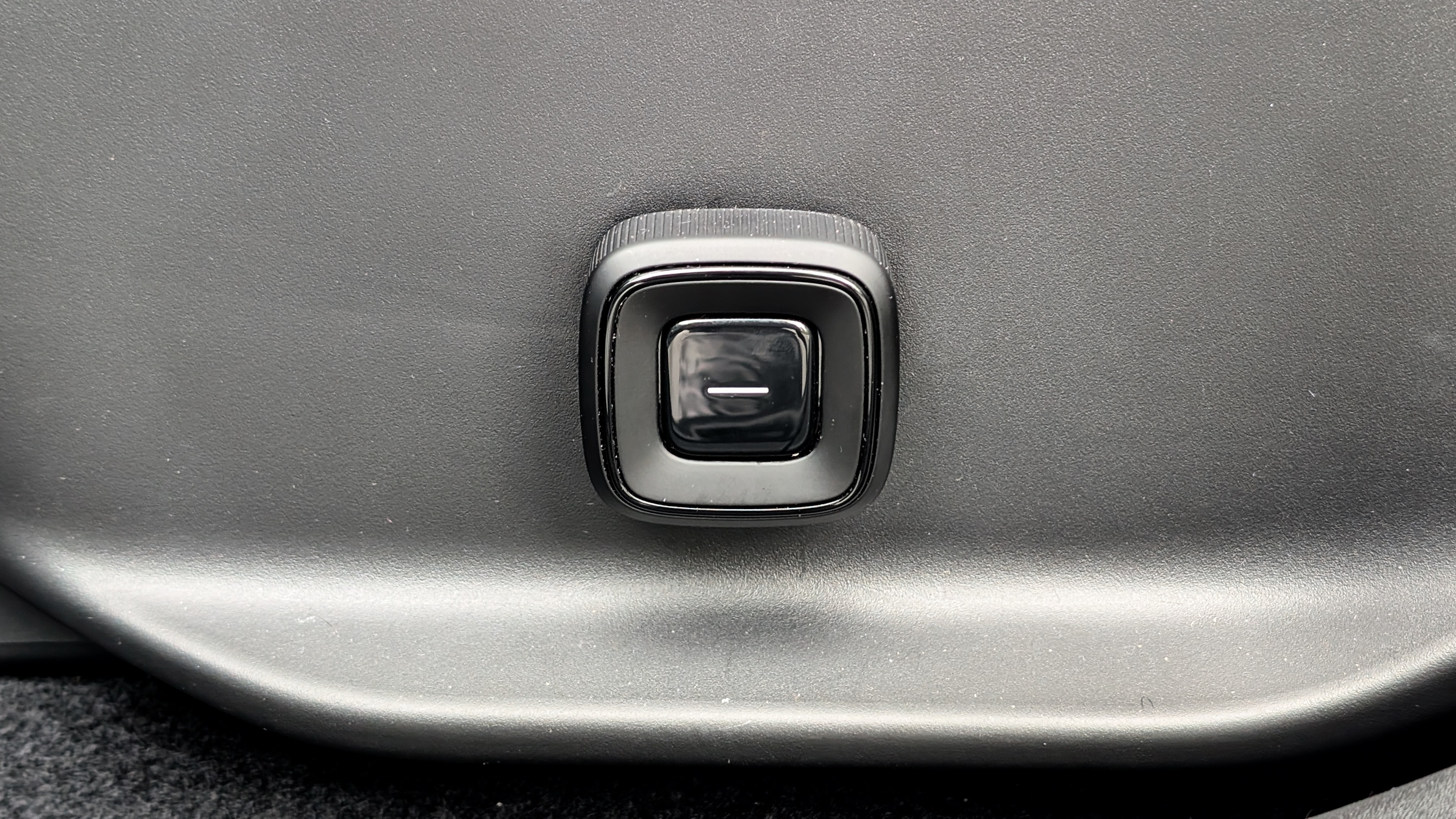
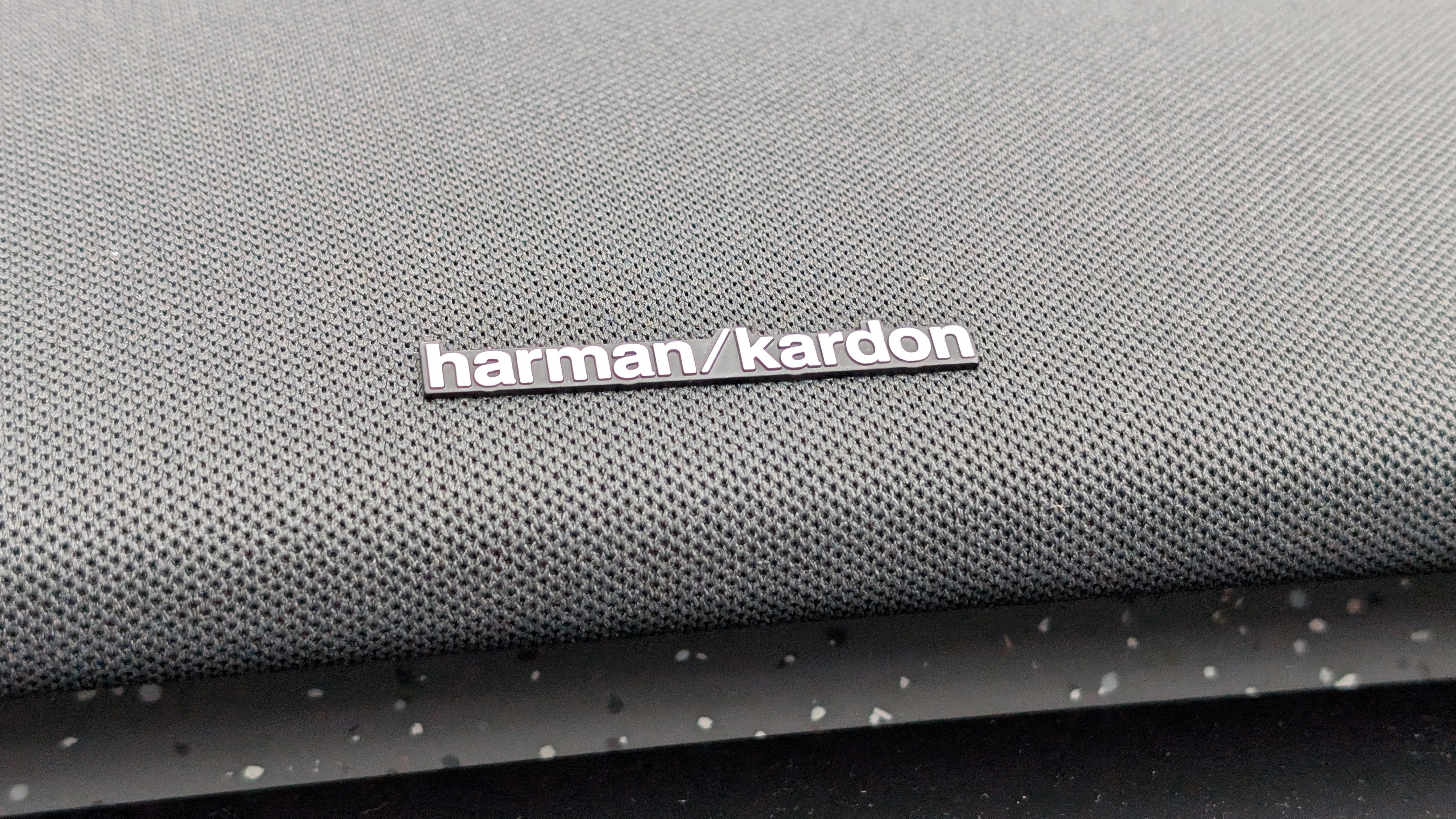
Obviously, this is subjective, but I think the EX30 is very attractive for a compact SUV. Volvo’s Scandinavian design chops are on full display here, from the overall proportions to the clean lines. The EX30’s exterior looks refined and polished from every angle, and includes most of Volvo’s familiar design elements, including the Thor’s hammer headlights, clamshell hood, blocky door handles, black roofline, and signature two-piece tail lights.
Sign up for breaking news, reviews, opinion, top tech deals, and more.
This isn’t a big car (166.7 inches long, 104.3-inch wheelbase), but since it’s an EV, you get a flat floor and plenty of space inside (41.9/32.3 inches of legroom front/rear, 27.8/12.4 cu. ft. of cargo space with the rear seats down/up). I was able to throw two mountain bikes in the back (with their front wheels removed) after folding the rear seats down, with room to spare. There’s even a frunk (front trunk), though it’s disappointingly small (0.2 cu. ft.).
Volvo’s Swedish design prowess continues inside. The EX30’s interior is minimalist without being bland, clean without being sterile. And unlike Tesla, Volvo’s minimalist approach doesn’t sacrifice material and build quality – yes, we’re looking at you, pre-facelift Model 3 and Model Y. While the EX30 follows in Tesla’s footsteps by having a single, center-mounted touchscreen, Volvo still includes turn signal and gear selection stalks.
As a former (twice) Model 3 owner, I’m used to not having an instrument display, and it doesn’t bother me. Most drivers adapt quickly, and if this helps Volvo keep the EX30 affordable, I’m totally on board. Same with the lack of physical controls, centrally mounted glove box (clever!), and the excellent-sounding Harman-Kardon sound bar mounted below the windshield, which replaces multiple individual speakers throughout the car.
The EX30’s only interior faux pas is that instead of having four individual window switches for the driver like most vehicles, it only features two window switches alongside a single button to toggle between the front and rear windows. It’s something that also plagues the Volvo EX90, Polestar 3, Volkswagen ID.4, and VW ID.Buzz. Let’s hope this doesn’t become a trend, because it’s extremely annoying and rather unnecessary.
Score: 8/10
Real world range
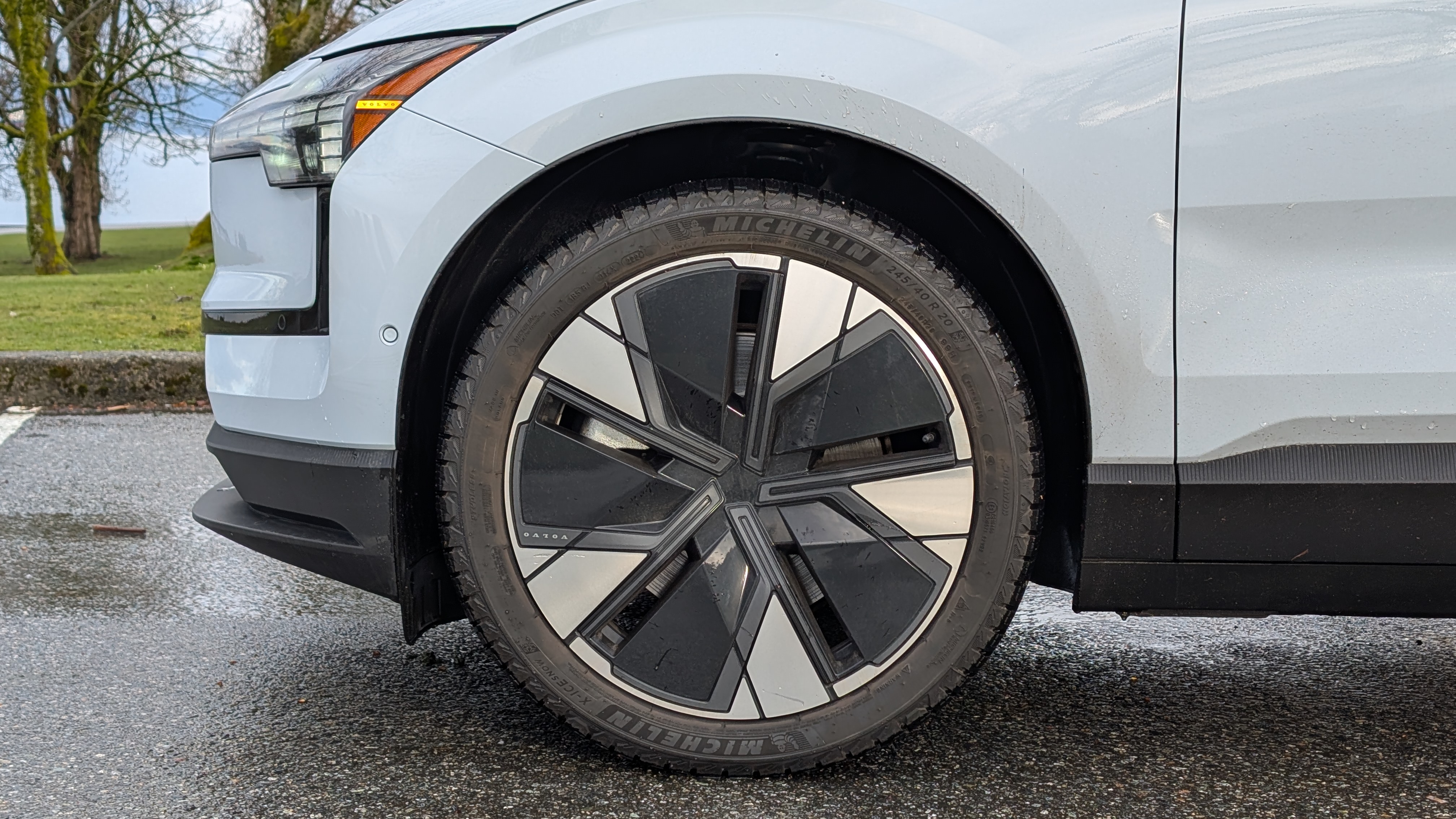
Does the EX30 meet my first requirement – a real-world range of more than 275 miles? Not quite. The EPA range of 253 miles – about 210 miles in practice – is fine but not spectacular. On my drive between Vancouver, BC, and Seattle, I had to charge (20 to 80%) once each way. Then again, the 64kWh battery is smaller than many other EVs offering this kind of range, making the EX30 reasonably light (4,151 lbs) for an all-electric SUV.
Score: 6/10
Charging speeds
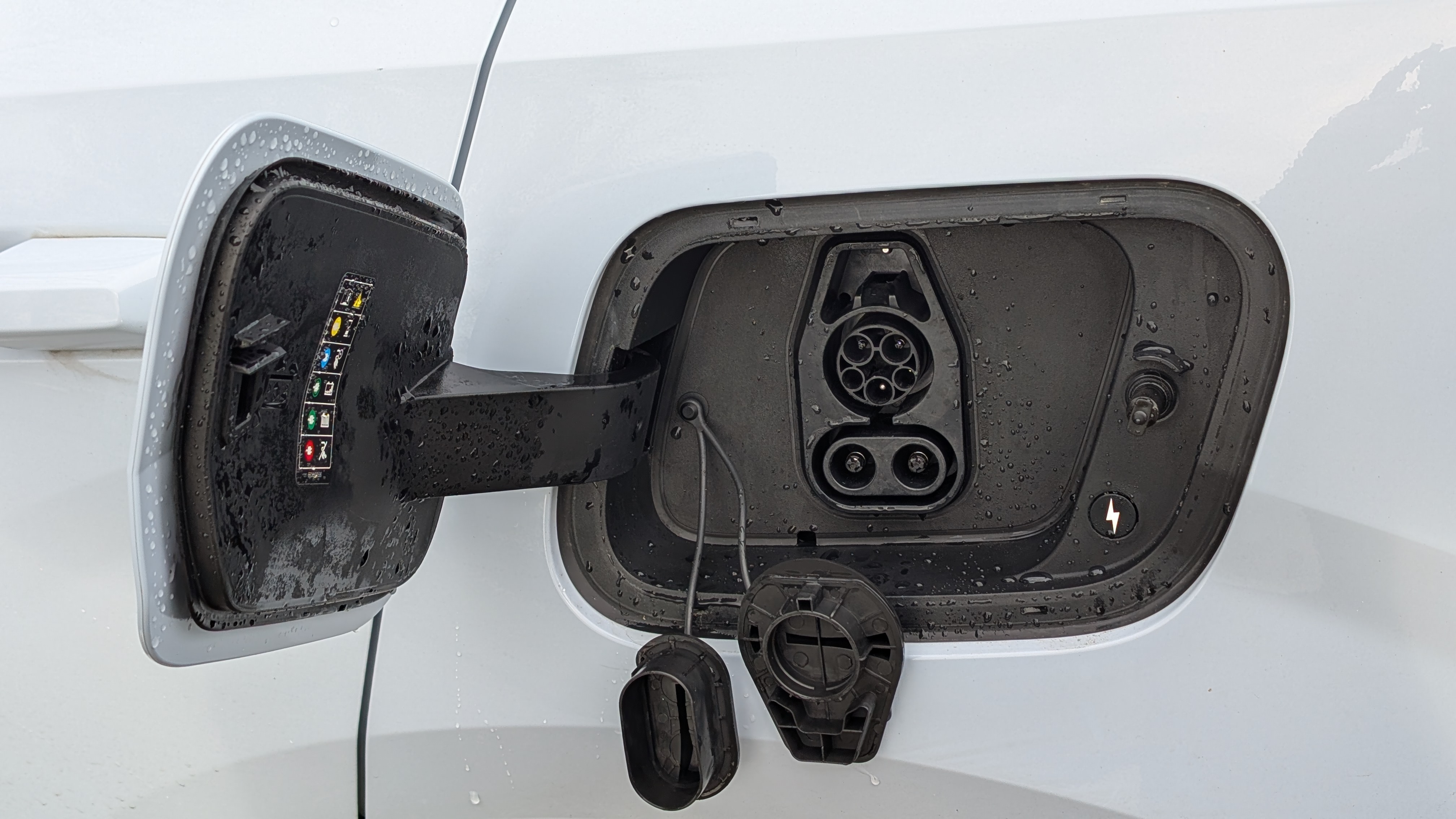
The next must-have feature on my list is Supercharger access and charging rates above 200kW. While the EX30 supports Tesla’s charging network with a NACS to CCS adapter, it peaks at about 153kW, which is decent, but not great. My two aforementioned Supercharger charging sessions (20-80%) took approximately 40 minutes each – despite preconditioning the battery – which is on the slow side for a modern EV.
Score: 6/10
Software and tech
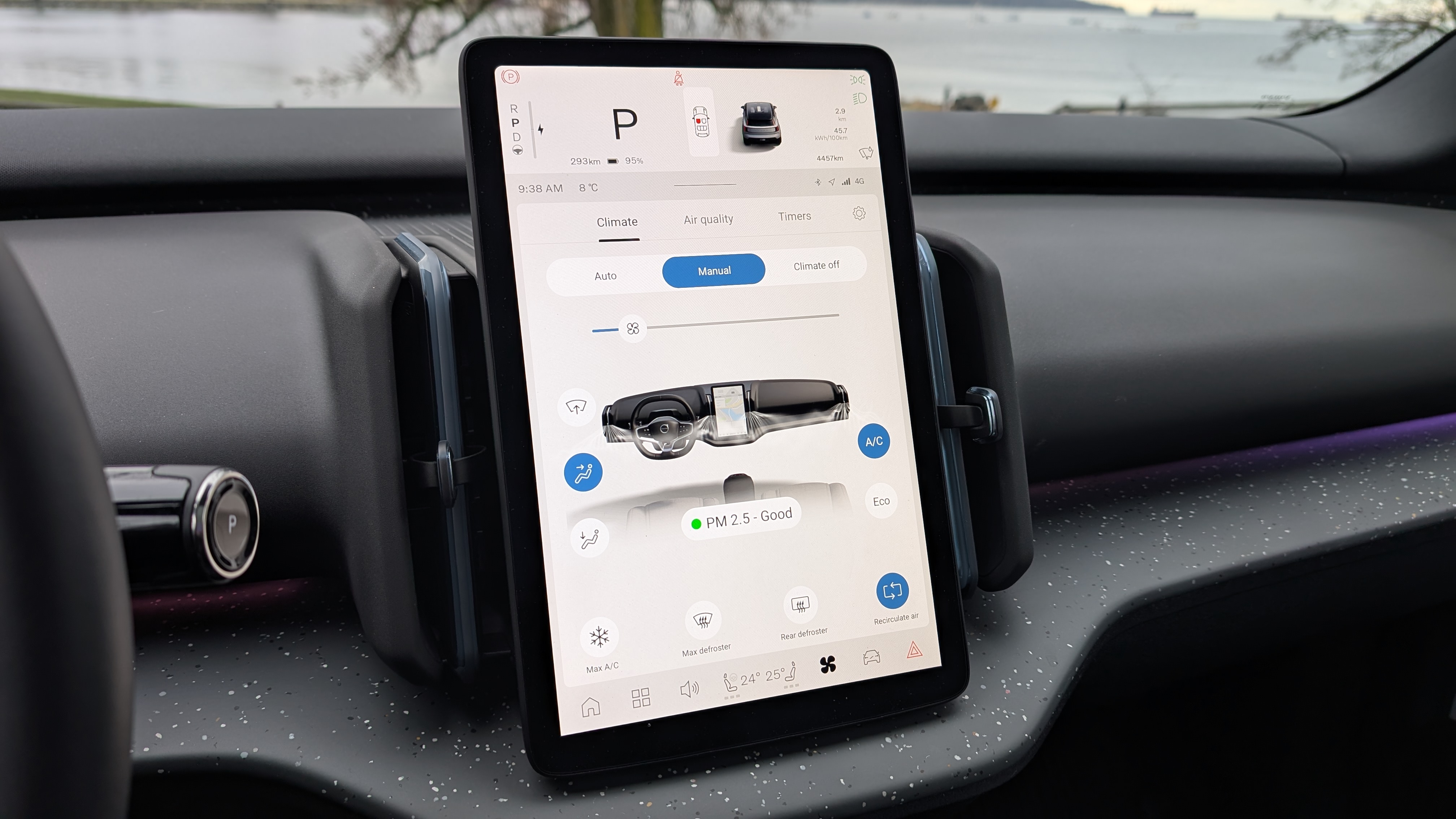
The EX30 is a fully software defined vehicle (SDV), so it meets my third requirement. Very few EVs available in the US today are full SDVs. Only Tesla and Rivian’s vehicles really fit the bill. Most Chinese EVs are also SDVs, and since Volvo is owned by Chinese automotive giant Geely (alongside Polestar), the EX30 is a proper SDV. What this basically means is that all of the car’s software can be updated over the air (OTA).
SDVs are designed from the ground up around the software experience, with fewer, more powerful computers controlling different areas (or zones) in the vehicle. This means that SDVs can gain new features and receive bug fixes on a regular basis without customers having to visit a service center. As such, the EX30 is one of the few EVs I’ve driven (alongside Rivian’s gen 2 vehicles) that replicates Tesla’s superb user experience.
The EX30’s infotainment system is similar to what’s available in the Volvo EX90 and Polestar 3, but with a smaller display. It consists of a Qualcomm Snapdragon Cockpit-powered system with a 12.3-inch center-mounted portrait touchscreen running Android Automotive with Google built-in. The resulting infotainment experience is clean, simple, responsive, and super intuitive. In other words, the EX30’s software is a real pleasure to use.
Besides offering Google Assistant, Google Maps for route planning, YouTube, and the Google Play Store, the EX30 includes wired and wireless Apple CarPlay (but not Android Auto), 5G connectivity (free for four years), four USB Type-C charging ports, Qi wireless phone charging, phone-as-a-key functionality, phone remote control via Volvo’s EX30 app, plus optional extras like a 360-degree view, Level 2+ ADAS, and self-parking.
While my experience with the EX30 was mostly positive, I ran into several bugs, and judging from various online forums, I’m not alone. For example, my press car struggled to keep a steady temperature inside the cabin, despite the climate being set to auto. So, at any given time, it was either slightly too warm or too cold inside. Also, I was unable to test Volvo’s EX30 phone app because I couldn’t add the vehicle to my account.
Score: 8/10
ADAS and driving
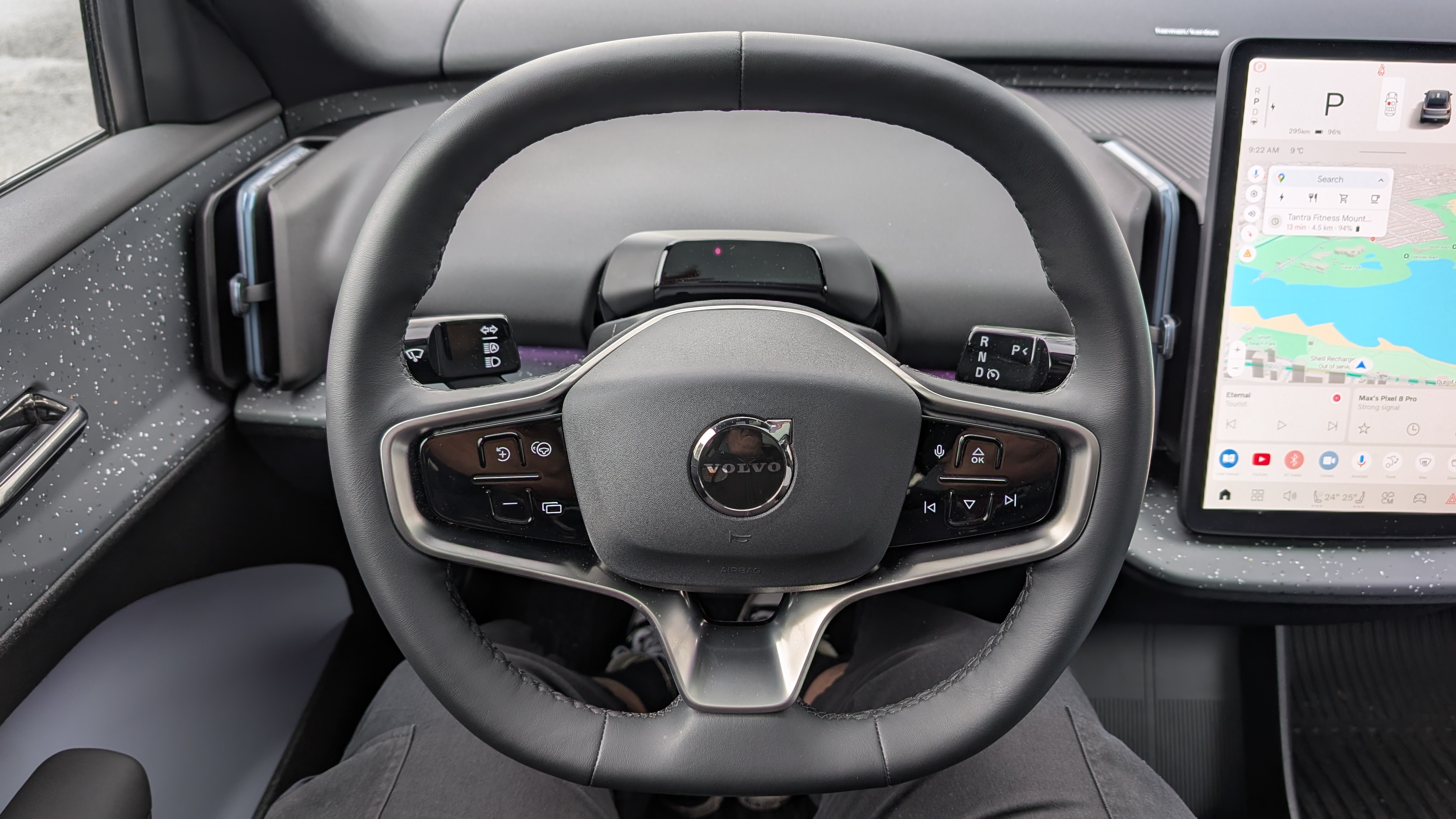
My next must-have feature is Level 2+ ADAS (advanced driver assistance system). This enables basic “self-driving” on highways and freeways as long as you keep your eyes on the road and hands on the wheel. Volvo calls it Pilot Assist, and while it’s not available on the EX30’s base “Plus” trim, it’s standard on my press car’s “Ultra” trim ($47,895) – alongside the 360-degree view, self-parking, and rear auto-brake features.
Pilot Assist works well and supports automatic lane changes, making this system Level 2+. As for the rest of the driving experience, the EX30 is fast (422 hp, 0-60 mph in 3.4s) and fun to drive. The ride is quiet and comfortable but just firm enough to feel sporty, and the handling is sharp, with strong body control. As with most modern vehicles, the steering doesn’t provide much feedback, but it’s quick enough to be engaging.
The EX30 does a good job blending regenerative and friction braking, but one-pedal driving could benefit from stronger regen when lifting off the accelerator. Also, there’s currently a bug where charging the EX30 to 100% disables one-pedal driving (even if it's enabled in the settings) until you soft reset the car. Thankfully, like the other bugs I previously mentioned, this could easily be fixed with an OTA software update.
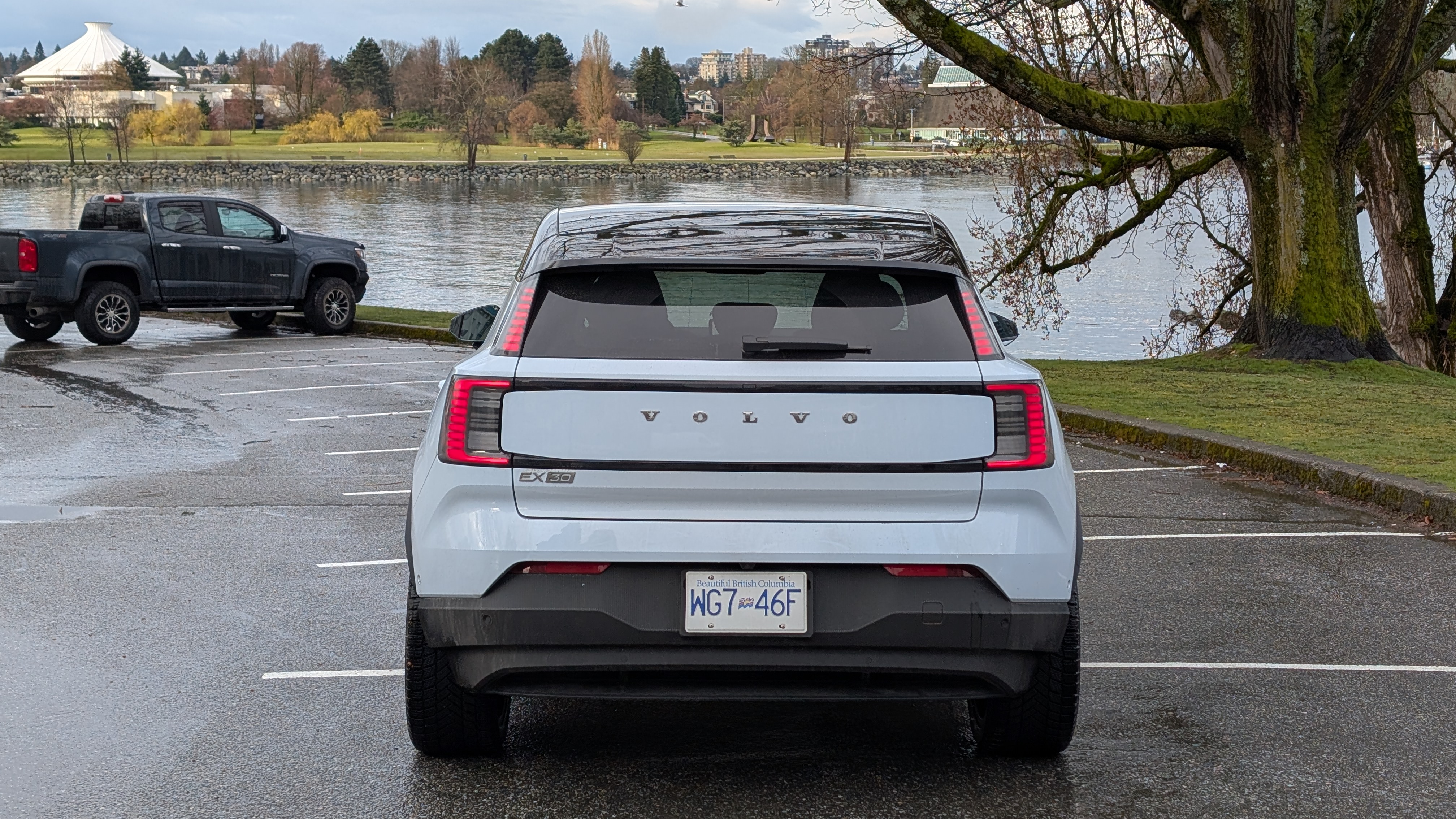
Something else that could use some tuning is shifting gears between drive and reverse. Most EVs let you change gears even if the vehicle is still rolling a little, since going backwards is achieved by just spinning the electric motor in the other direction. But with the EX30, you must come to a complete stop before you can switch gears between D and R. This slows down parking maneuvers, and can even be dangerous.
As you’d expect from a Volvo, the EX30 packs a comprehensive suite of safety and driver assistance features, including driver alertness monitoring, blind spot monitoring, lane departure warning, lane keeping assist, front and rear cross-traffic assist, forward collision warning, automatic emergency braking, and more… Most of these are pretty standard fare on modern cars these days, but still worth mentioning.
Score: 8/10
Purchase options
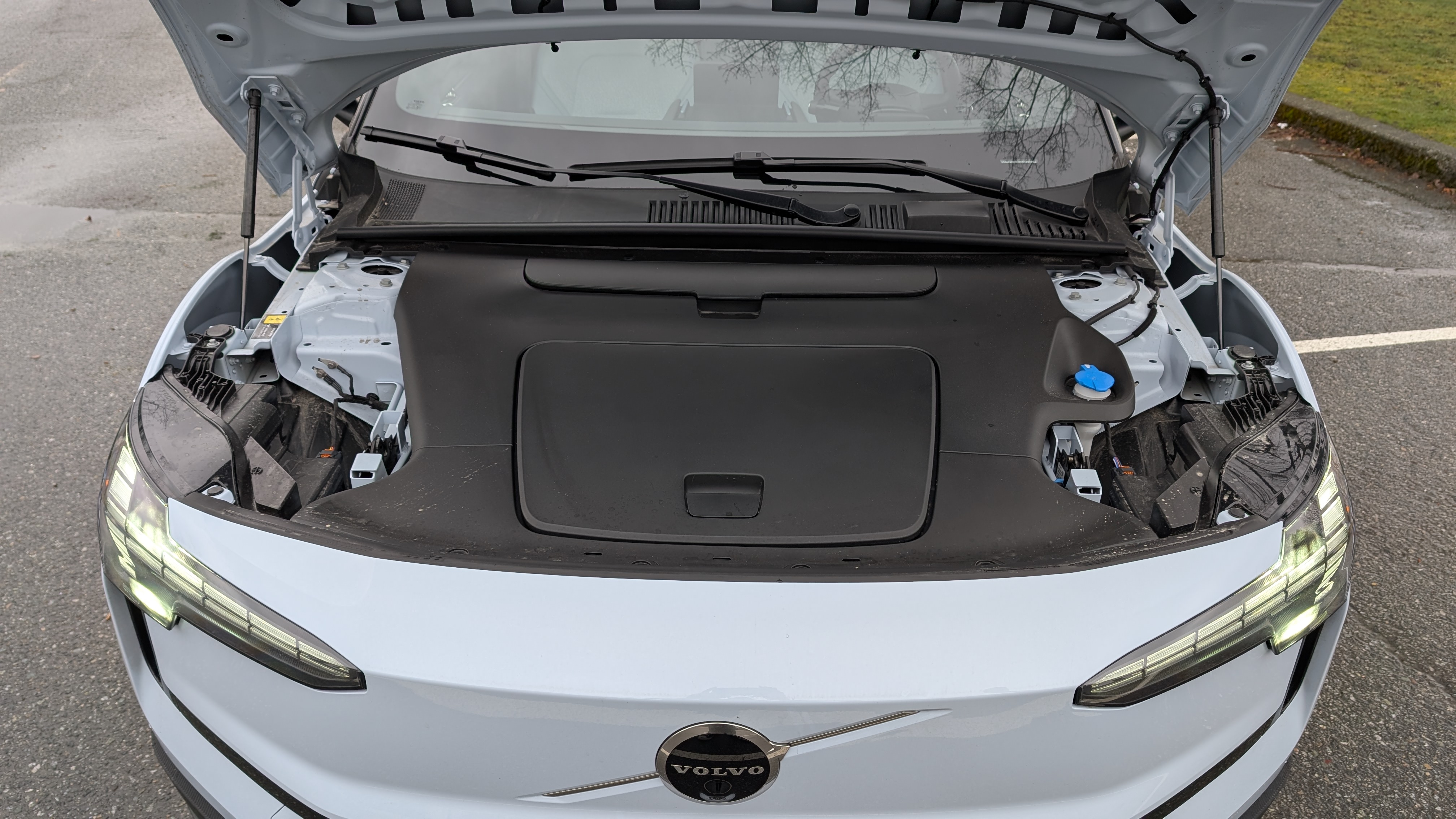
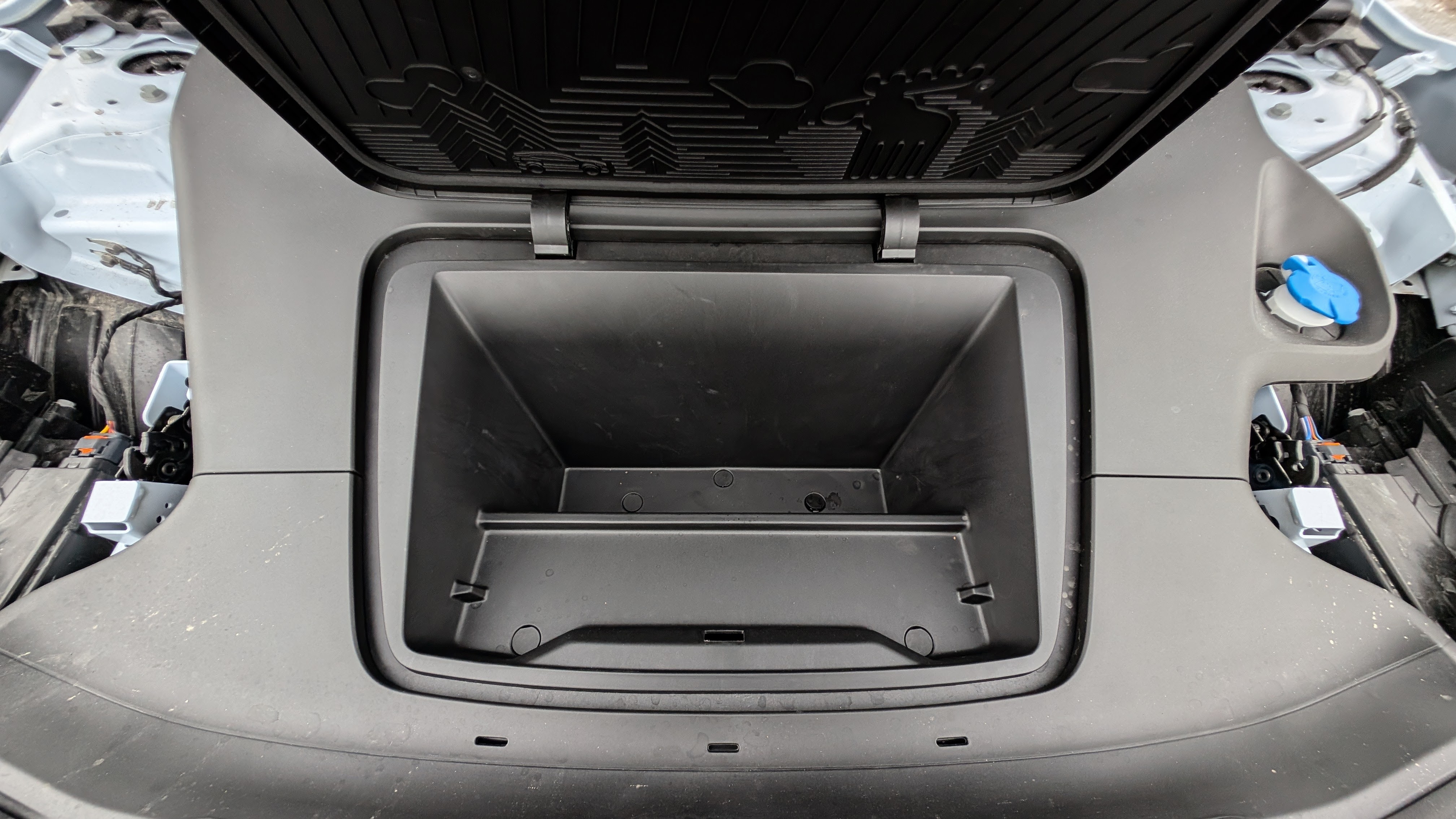
Unfortunately, the EX30 does not meet my fifth requirement – direct-to-consumer sales. Volvo uses a traditional dealer network to sell its vehicles, with all the drawbacks that entails. On the plus side, it looks like most Volvo dealers in the US don’t markup their cars. In Canada, Volvo’s One Price Promise for EVs guarantees “a straightforward and transparent shopping experience that's negotiation-free, both online and in-store”.
Score: 4/10
My takeaway
Without a doubt, the Volvo EX30 is a fantastic EV. I love the clean exterior and minimalistic interior design, plus it’s small and light (for an all-electric SUV) yet doesn’t feel cramped. The EX30’s software and tech package comes closer to matching the experience delivered by my former Model 3 than any other EV I’ve driven yet. Volvo’s Level 2+ ADAS is competitive, and the EX30 doesn’t compromise on performance or driving pleasure.
Regardless, there’s still room for improvement. The 253-mile EPA range and 153kW charging rate are middling at best, and Volvo doesn’t sell direct-to-consumer, which is unfortunate. I’m a tech-savvy early adopter, and I don’t mind being the occasional beta tester, but the EX30 suffers from more bugs than I’m comfortable with. And while these issues can be fixed with OTA software updates, they don’t make for a great first impression.
Still, if you’re leaving Tesla and are craving a reasonably affordable EV with a similar user experience, the Volvo EX30 might just be your ticket.
You might also like

Myriam Joire (tnkgrl) was born wearing combat boots and holding a keyboard. Moments later she picked up a soldering iron. On weekends, she rally-raced with her father. She's been stomping, typing, hacking, and driving ever since. After spending years being a code-monkey in the video game industry, she joined Engadget as Senior Mobile Editor and later Pebble as Chief Evangelist. Today she hosts the weekly Mobile Tech Podcast, makes videos on YouTube, writes about tech and cars for TechRadar and other major publications, and advises startups on product/media strategy. She's based in San Francisco.
You must confirm your public display name before commenting
Please logout and then login again, you will then be prompted to enter your display name.